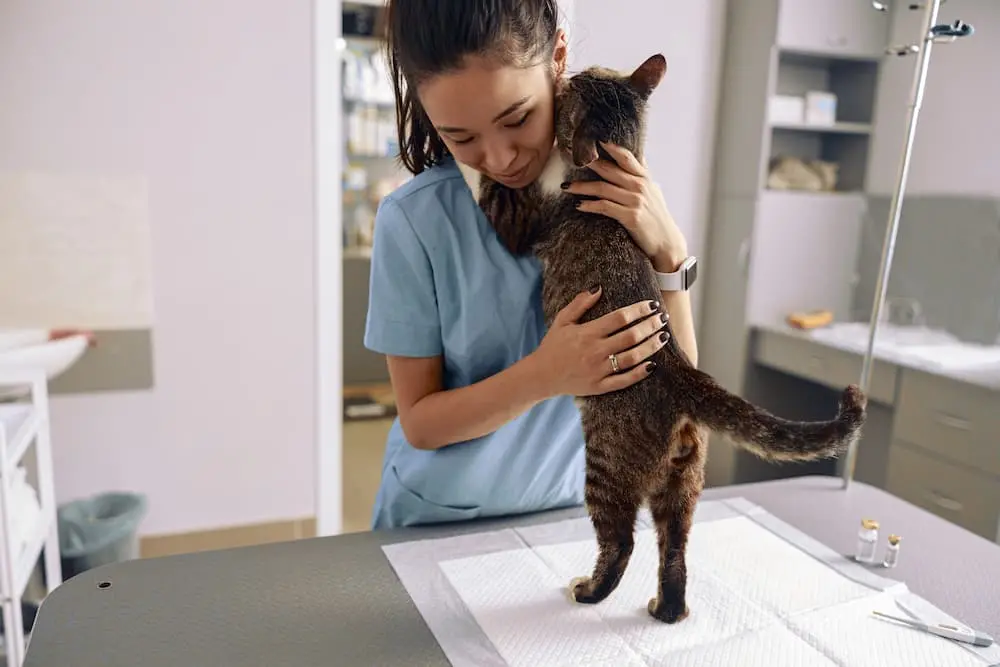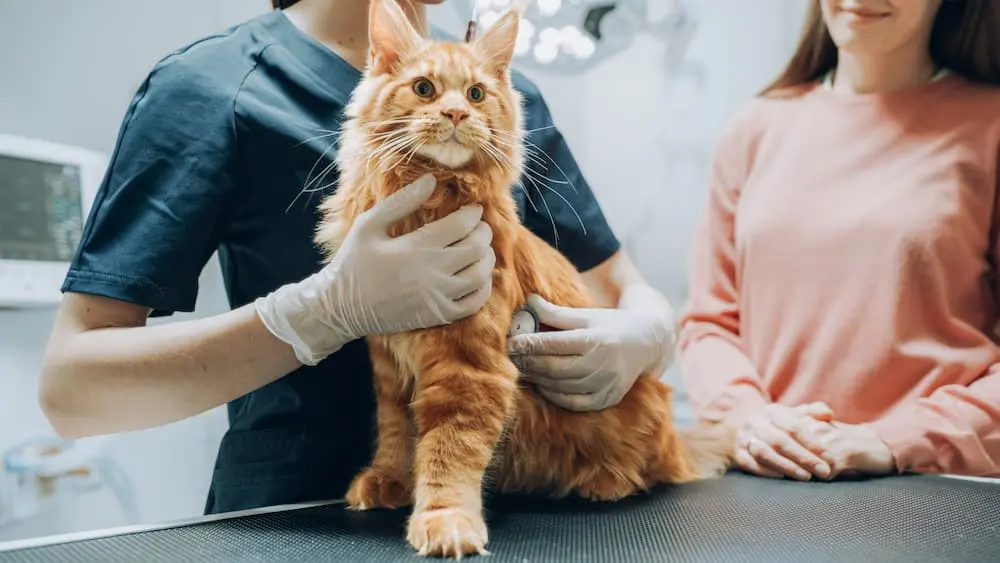As a loving cat owner, it’s likely that you are always attuned to the health and well-being of your feline companion. In many cases, there are small signs that can indicate that your cat is dealing with an illness or infection. And if you’re able to recognize these signs, you can take quick action to help them recover. One common health issue that can affect cats is urinary tract infection (UTI).
This condition can cause discomfort and, if left untreated, can lead to more serious complications. In this guide, we will explore what UTIs in cats are, how to recognize them, and what treatment options are available.
Can Cats Get UTIs?
Yes, cats can indeed suffer from UTIs, although they may not be as common as in other pets like dogs. When UTIs do occur in cats, they require prompt attention to avoid further health issues.
What Does an Urinary Tract Infection in Cats Look Like?
A urinary tract infection (UTI) in cats is a condition that can be both uncomfortable and distressing for your feline friend. It generally involves inflammation and bacterial infection of the urinary system, which includes the bladder and urethra. This inflammation can lead to a variety of symptoms, some more noticeable than others, but all equally important in diagnosing and treating the condition.
Signs of UTI in Cats
Cats often do not show overt signs of pain or discomfort until a condition becomes severe. So, it’s crucial for cat owners to be vigilant about subtle changes in behavior or habits that might indicate a UTI.
Here are some cat UTI symptoms to watch out for:
- Frequent Attempts to Urinate: One of the most common signs of a UTI in cats is making frequent trips to the litter box. You might notice your cat straining, but only a small amount of urine is produced each time. This can be due to the inflammation of the bladder or urethra, making it difficult for them to urinate normally.
- Painful Urination: If your cat is experiencing pain during urination, they may vocalize their discomfort. This could manifest as meowing, howling, or yowling in the litter box. Cats might also show a general increase in agitation or restlessness due to the discomfort.
- Blood in the Urine: Hematuria, or blood in the urine, is a clear indicator that something is wrong. The urine might appear pinkish or reddish, or you might notice blood spots in the litter box.
- Excessive Licking: Cats with UTIs may excessively lick their genital area in an attempt to soothe the irritation and discomfort they are experiencing.
- Urinating Outside the Litter Box: A cat with a UTI might start urinating outside the litter box. This change in behavior can often be misunderstood as a behavioral issue, but it might be due to the pain and discomfort associated with the UTI.
- Strong Odor to the Urine: While cat urine naturally has a strong scent, a noticeable increase in the strength or change in the odor of your cat’s urine can be another sign of a UTI.
Catching these signs early and consulting with a veterinarian can lead to a quicker diagnosis and treatment, alleviating your cat’s discomfort. It’s essential to be observant and proactive in seeking veterinary care if you suspect your cat might have a UTI.

Cat Urinary Tract Infection: FAQs and Facts
Understanding UTIs in cats is key to providing them with the best care. Here are some frequently asked questions and facts:
What Causes a Cat UTI?
Usually, UTIs are a result of bacteria, but several other factors can increase a cat’s vulnerability to these infections. Here are a few common causes of feline UTIs:
- Bacterial Infection: The primary cause of UTIs in cats is bacteria, often originating from the fecal matter that enters the urinary tract. This can happen during grooming or when a cat uses a litter box. Bacteria travel up the urethra to the bladder, causing inflammation and infection.
- Stress: Cats are sensitive creatures, and stress can significantly impact their physical health. Stressful environments or changes in routine can disrupt a cat’s immune system, making them more susceptible to UTIs. Stress can also cause behavioral changes, such as reduced grooming, which might increase the risk of bacterial contamination.
- Poor Diet: Diet plays a critical role in a cat’s overall health, including their urinary health. Diets that are high in minerals and low in moisture can lead to the formation of crystals or stones in the urinary tract, creating an environment conducive to bacterial growth and UTI development.
- Lack of Adequate Hydration: Cats are notorious for their low thirst drive, and inadequate water intake can lead to concentrated urine. Concentrated urine not only increases the risk of crystal and stone formation but can also provide a suitable environment for bacteria to thrive.
- Pre-existing Health Conditions: Cats with certain chronic illnesses such as diabetes or kidney disease, can have an increased risk of developing UTIs. These conditions can weaken a cat’s immune system or alter the urinary tract’s normal defense mechanisms, making it easier for bacteria to infect the urinary tract.
- Anatomical Abnormalities: Some cats may have congenital abnormalities in their urinary tract that can impede urine flow or lead to urine retention, both of which can raise the risk of UTIs.
- Age and Gender: Older cats and females, in particular, are more prone to UTIs. In older cats, this can be due to a decrease in immunity, while the shorter urethra in female cats can make it easier for bacteria to enter the bladder.
How is a UTI Diagnosed in Cats?
Diagnosing a UTI in cats usually involves a combination of a physical examination, a review of symptoms, and laboratory tests. A urinalysis is often the key diagnostic tool used to detect the presence of bacteria, blood, and other indicators of infection.
What is the Treatment for UTIs in Cats?
Treatment for a UTI in cats typically involves antibiotics to clear the infection. The type and duration of antibiotic therapy will depend on the severity of the infection. In addition to medication, increasing water intake and dietary changes may also be recommended to support urinary health. Ultimately, a veterinarian is your best source for information about how to treat UTI in cats.
What is Recovery Like for a Cat Urinary Tract Infection?
Recovery from a UTI in cats is generally good, provided the infection is treated promptly. It is essential to complete the full course of prescribed antibiotics even if symptoms appear to improve. Owners should monitor their cat’s urinary habits and ensure easy access to fresh water to encourage drinking.
Feline Urinary Tract Disease (FLUTD) vs. UTI in Cats
While UTIs are infections, Feline Lower Urinary Tract Disease (FLUTD) is a broader term that encompasses various conditions affecting the bladder and urethra. FLUTD can include UTIs but also covers other issues like a cat bladder infection, bladder stones, or idiopathic cystitis.
Understanding the difference is important for proper diagnosis and treatment and is a major reason why cat owners should consult a veterinary professional when needed.
Is Your Cat Uncomfortable and Showing Signs of a UTI? Contact UrgentVet Today!
If you suspect your cat may be suffering from a urinary tract infection or if you’re noticing any cat UTI symptoms, don’t hesitate to seek veterinary care. Early intervention is crucial for your cat’s health and comfort.
At UrgentVet, we’re committed to providing top-quality, compassionate care for your feline friend. We’re here to offer the urgent care your cat needs when they need it most. Contact your nearest UrgentVet location or walk in for an appointment today!
Image Credits: Friends Stock– Gorodenkoff / Shutterstock


